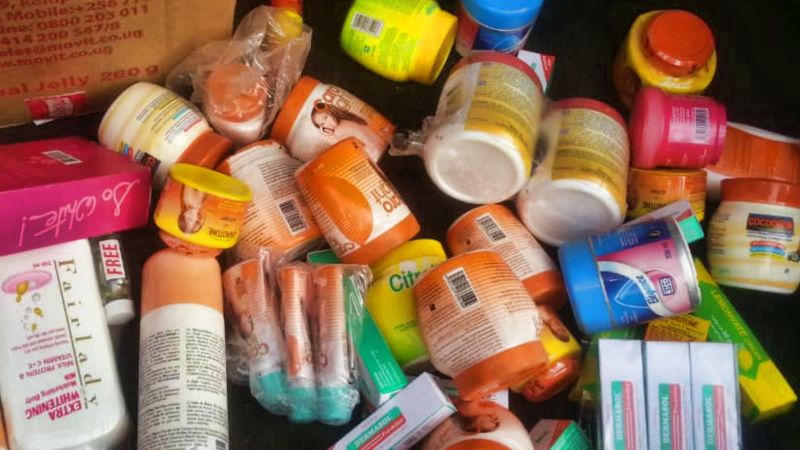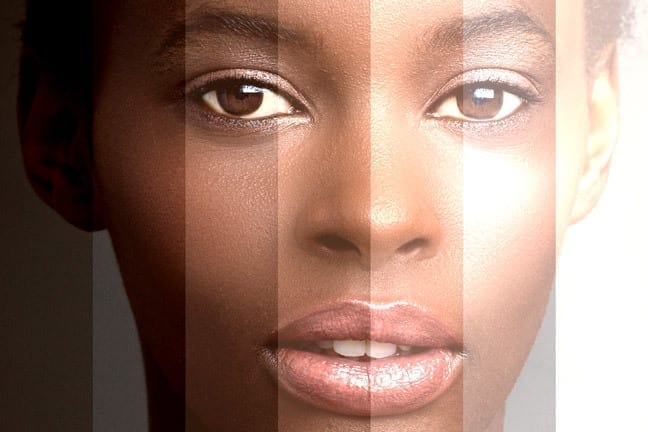A left-right combination of hooks by Smith Odoom opened a deep cut on Percy Oblitei Commey’s right cheek in the early minutes of the fourth round in a West Africa and National Super featherweight Championship boxing bout.

By the seventh round, ringside doctors had to step in. Commey disregarded his corner men’s advice to discontinue the fight. Finally in the eleventh round, Referee Osabutey had to stop the fight. There was a new champion in May, 2001.
Commey did not only lose his title but also, he lost a piece of his skin. The world would not remember what the veteran boxer brought to the boxing ring in a career that spanned well over three decades but what he left the boxing ring with, a peeling skin with cuts on the cheek, nostrils and the right ear. His years of skin bleaching had caught up with him.

Skin Bleaching; Prevalence and Motives
Vaseline, sub-brand of Unilever, in June, 2010, together with Facebook, launched a skin bleaching app in India targeting men. The widget on Facebook read, “Transform your face on Facebook with Vaseline Men.’’ India is a country that is sensitive to skin colours, a thriving market driven by fashion and cultural preference for a fairer skin.
An online dating site Shaadi.com conducted a poll of nearly 12,000 participants. It revealed that skin tone was considered the important criteria for choosing partners in three Northern states in India.
Skin bleaching is the cosmetic application of topical ointments, gels, soaps and household chemicals to de-pigment or lighten (bleach) the skin complexion (Charles, 2003). Many commentators believe that skin bleaching has already reached an epidemic proportion. Even though data on skin bleaching is hard to come by, various researchers have put out estimations.
Estimates range from 24% of women in Japan and 30% of women and 5% of men in Ghana to 60–65% of women in India and even, higher rates in cities like Lagos, Nigeria where up to 77% of women may use skin bleaching products. A study by University of Cape Town suggests that one in every three South African women bleaches her skin. Statistics on men remain, even more, scanty.
People of colour are some of the biggest consumers of skin bleaching products which include household chemicals like automotive battery acid, bleach, laundry detergent, toothpaste, and over-the-counter creams, putting them at greater risk for a variety of negative health outcomes (Street et al., 2014).

Bleaching creams and lotions contain bleaching agents like hydroquinone, arbutin, kojic acid, azelaic acid, Vitamin C and mercury. Hydroquinone and mercury are the primary agents that are normally used. Certain conditions like moles and birthmarks result in high pigmentation in certain zones. Hyperpigmentation can also be caused by pregnancy and birth control pills. Hydroquinone for example, has been used as depigmentation agent.
The allowed percentage in cosmetics is 2% (over the counter) or 4% or more from physician. But in many skin bleaching creams and lotions, the percentage is well over these approved ones. Its mode of action is by disrupting melanin production, the pigment responsible for the colour of human skin, hair, eyes and also, tanning of skin when exposed to sunlight. It also protects the skin from the sun’s UV rays. People of all races have the similar concentration of melanin-forming cell in the skin which is called melanocyte but what differs is the amount of melanin produced.
There are 6 different skin types that are defined by dermatologists. African Americans, Africans, or dark-skinned individuals are classified as Type 6 and defined as ‘’never burns, but tans very darkly.’’ By stopping the production of melanin, the user’s skin becomes ‘’fairer.’’
Skin bleaching has synonyms such as skin whitening and skin lightening. Loosely, it connotes the motivation as buying into the privilege of racial and colonial establishments, and as a status symbol. It is also for social reasons like employment opportunities and marriage suitability. The contemporary practice of skin bleaching widens the psychology beyond the confines of colonial mentality and white supremacy.

Paying the price
Since January, 2001, the EU has banned hydroquinone and in the US, the concentration does not exceed 2%. This can be seen as a move in the right direction especially when one considers the reported consequences of skin bleaching.
“Dermatologic consequences include: skin lesions, epidermal atrophy (thinning of the skin), exogenous ochronosis (bluish black tissue discoloration), eczema, bacterial and fungal infections, dermatitis (skin inflammation), scabies (contagious skin disease), warts, acne, sun damage and body odour.
Further skin bleaching can lead to fragile skin, poor wound healing, scarring and the need for corrective surgery. Other more serious health risks include hypertension, diabetes, infertility, leukaemia (blood cancer), skin cancer, foetal toxicity (foetal poisoning), immunosuppression (suppression of a healthy immune response), renal and liver impairment and failure, Cushing’s syndrome (hormone disorder), insomnia, memory loss, tremors, speech and hearing impairment.
These harms extend from the acute or chronic long-term exposure to the often hazardous chemical agents that are present in bleaching products. In addition, the damage from bleaching products is often exacerbated when users mix bleaching products with household chemicals such as toothpaste, laundry bleach, detergents and even automotive battery acid, a very common practice in some settings, to try to enhance their effect.”Street et al. (2014).
In 1976, Fela Kuti sang ‘’Yellow Fever/ Na Poi.’’ It was a critique of skin bleaching. As the practice has travelled through contemporary times, it has become multifaceted. Our response should be understanding it better and encouraging one another with words and actions which will make us feel comfortable in the skin we were born with.
